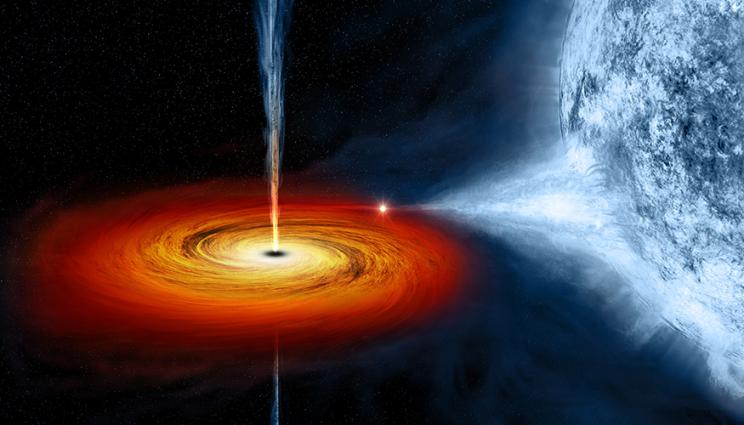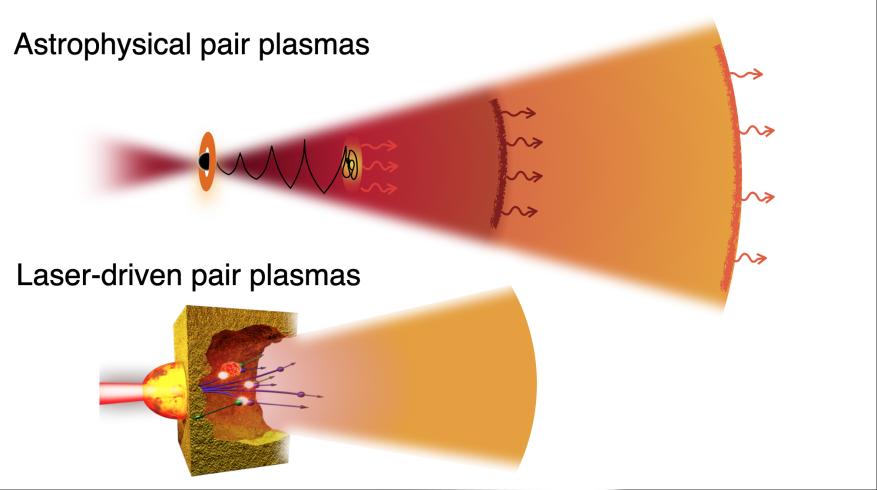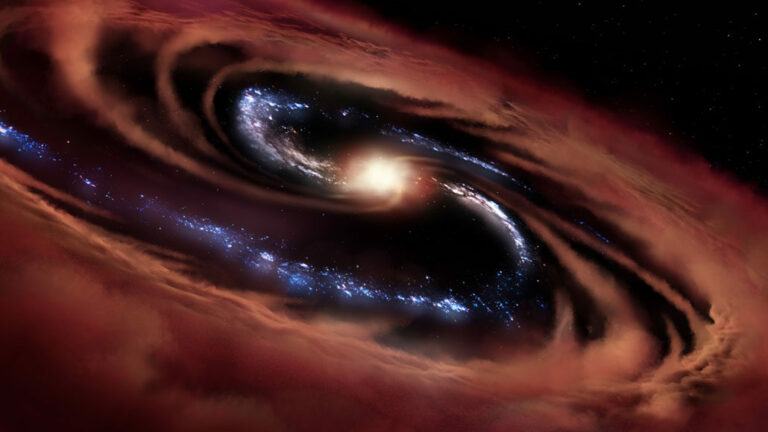Using high-power lasers to shed light on the science of black holes and gamma-ray bursts.
Record-high numbers of electron-positron pairs can now be created using high-power lasers, offering exciting opportunities to investigate extreme astrophysical phenomena, including black holes and gamma-ray bursts. Electron-positron pairs are commonly generated in environments associated with the rapid collapse of stars and formation of black holes, eventually producing bursts of gamma rays, which are the brightest electromagnetic events in the universe.

The process of how these gamma-ray bursts are produced remains a mystery, but high-power lasers can help shed light on this process. By shining intense laser light into a gold foil, jets of electron-positron pairs can be generated in the laboratory, producing high-energy radiation that interacts with the nuclei of gold atoms, creating the pairs.
This breakthrough in the creation of electron-positron pair plasma is discussed in a recent review authored by physicists from Lawrence Livermore National Laboratory and SLAC National Accelerator Laboratory. These plasmas are abundant in high-energy astrophysical systems and can be found in environments associated with neutron star and black hole environments.
The ability to produce these plasmas in the laboratory offers a unique opportunity to advance our understanding of these exotic plasma regimes and benchmark current theoretical models and numerical simulations.

According to physicist Frederico Fiuza from SLAC National Accelerator Laboratory, despite significant progress in theoretical and numerical studies of relativistic pair plasmas, our understanding of the plasma dynamics in these exotic regimes is still limited. He explained that the fundamental interest and astrophysical importance of relativistic pair plasmas have led to efforts to produce and study them in the laboratory. In 2015, Lawrence Livermore researchers generated a record-high number of electron-positron pairs using more energetic lasers, breaking a previous record from 2008.
While it’s impossible to recreate the full range of conditions associated with compact astrophysical objects in terrestrial laboratories, there is significant value in developing experimental platforms that can study the basic collective processes associated with pair plasmas in a controlled environment. In their review, Chen and Fiuza discussed their perspectives for future experimental studies in this frontier topic, including the possibility of producing relativistic pair plasmas and studying their collective modes over a wide range of conditions.
They also addressed the prospects of studying streaming instabilities associated with the propagation of relativistic pair beams on ambient electron-proton plasmas.
Chen and Fiuza hope that their work will be a useful resource, inspiring young scientists to enter the field and contributing to the developments in the future.
The LLNL portion of the work was provided by the Laboratory Directed Research and Development program.
Do not forget to share your opinion with us to provide you with the best posts !




0 Comments